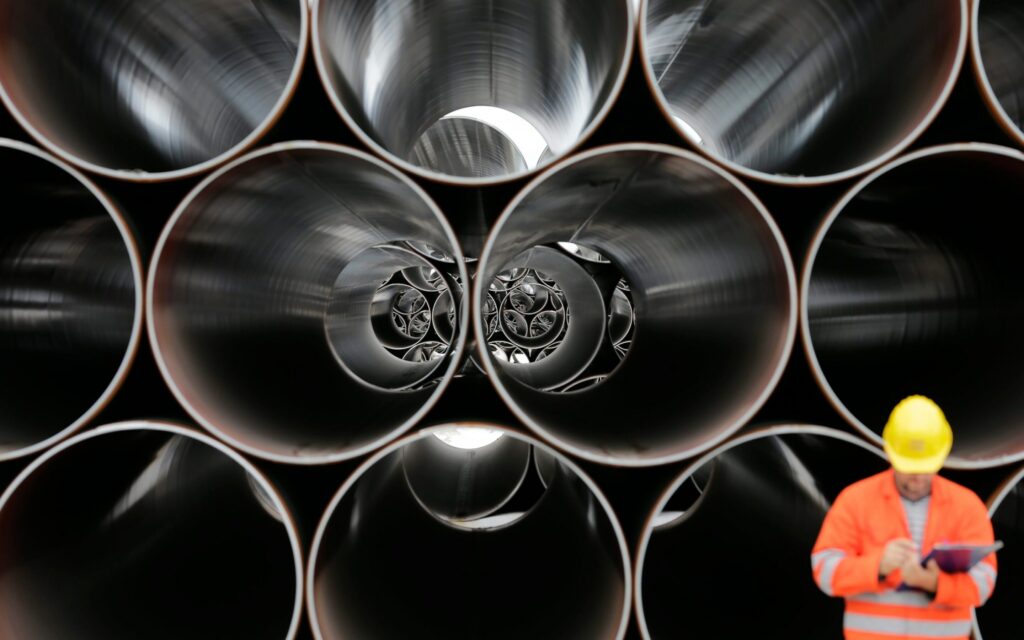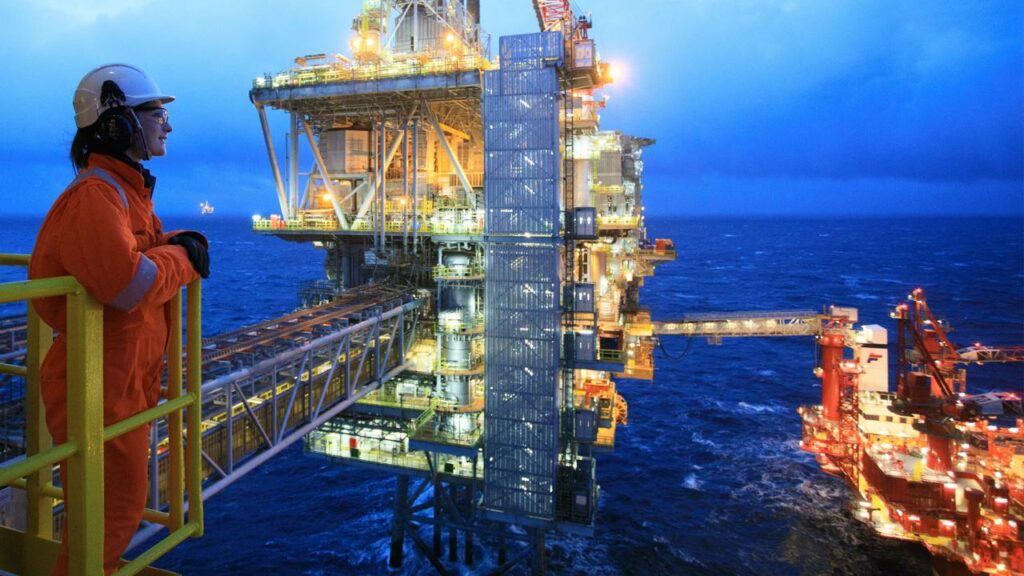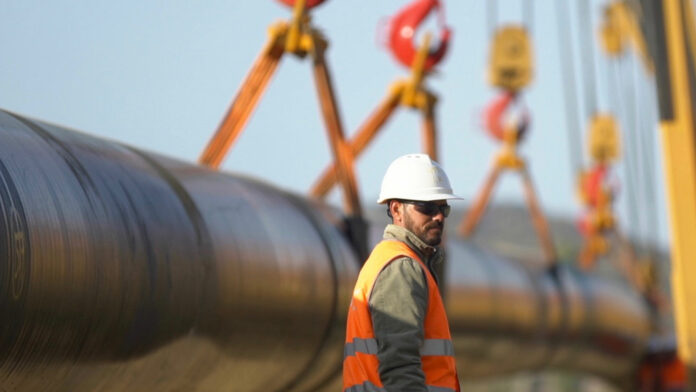BY KELLY CHAIB DE MARES
AZERI OBSERVER STAFF WRITER
General Picture
Since the late 1800s, hydrocarbon extraction has played a pivotal role in Azerbaijan’s political history and economy, being one of the Caspian Sea region’s main export routes to the West. Traditionally the country has been a prolific oil producer,as the 24th-largest crude oil producer in the world in 2018, mainly from the Azeri–Chirag–Gunashli complex in the Caspian Sea. Nowadays, its importance as a natural gas supplier is followed by the 1996 discovery of the Shah Deniz field (24.5 Bcm production in 2019). Overall, Baku is a net energy exporter, according to the International Energy Agency (IEA) Country Report – April 2020, “Azerbaijan is also a major exporter of crude oil (30.8 Mt in 2019) and natural gas (11 Bcm in 2019)”.
This wealth in resources and a balanced multi-sectoral foreign policy have served Azerbaijan to maintain economic cooperation opportunities with regional and international actors becoming a logistic hub. At the same time, Baku prevented Armenia from taking part in most of the region’s significant transportation projects in retaliation to Nagorno-Karabakh’s conflict. Agreements between the three transit states – Azerbaijan, Georgia, and Turkey,acted as a cornerstone to enhance energy security, the transport of natural resources, and connectivity. President Ilham Aliyev described the triangles as “transcending regional boundaries and having wider international significance, such as contributing to Europe’s energy security.”
In the trilateral cooperative efforts, Turkey plays a vital role in cohesion due to its land and sea connections towards Europe, its influence as a NATO member, financial capabilities, and military support. Such is the case that Baku and Ankara recently signed a memorandum of understanding on the Ighdir-Nakhchivan gas pipeline, to supply Nakhchivan with Azerbaijani gas through Turkey, instead of its current supply source from Iran;a one-year project that will be implemented by the national companies SOCAR and BOTAS.
Although Turkey is currently the main partner, it is not the only one. The government has managed to establish relations with countries with opposite interests, and together with its commercial and strategic partners, have built an impressively resilient infrastructure that improves the reliability and security of supply. Throughout its post-Soviet history, Azerbaijan’s oil reserves were developed primarily by Western companies, with the 1994 Contract of the Century, entrusting much of Azerbaijan’s offshore production to a consortium, including BP, Amoco, Pennzoil, and others. In 2017, this contract was extended until 2050.
In the nineties, Azerbaijani energy resources were exploited by more than ten international companies including the AIOC. Its oil was mainly transported through the Northern Route Export Pipeline, also known as the Baku-Novorossiysk (105 thousand barrels a day), which carried Siberian oil to Baku refineries during the Soviet times. The second transport route was through the Western Route Export Pipeline, also known as the Baku-Supsa pipeline (145thousand barrels per day).
Without a doubt, the project that had the most significant impact on Azerbaijan’s contribution to Western energy security was the Baku-Tbilisi-Ceyhan (BTC) oil pipeline (1 million barrels per day). The project transports crude oil from the Caspian Sea fields to the Mediterranean Sea. The pipeline diversifies the global oil supply thus easing Western nations’ dependence on oil from the Middle East. In the words of the United States Agency for International Development in its Country Development Cooperation Strategy 2020-2025, “since its completion in 2006, the pipeline has provided a route for Caspian oil to reach Europe without relying on Russian pipelines, providing a strategic advantage to Azerbaijan with 3.2 billion barrels of Azerbaijani oil flowing to Europe from 2016 to 2019”.
In parallel to the BTC, the first subsea development in the Caspian Sea runs The South Caucasus Pipeline, also known as Baku–Tbilisi–Erzurum Pipeline (BTEP) (25 billion cubic meters (Bcm/year), from the Shah Deniz gas field in Azerbaijan to supply – in its first stage – Turkey and Georgia. The pipeline has the potential to be connected to Turkmen and Kazakh producers through the planned Trans-Caspian Gas Pipeline. But it is the second stage, which has been the subject of news recently.
Shah Deniz 2 is the gas field with increased capacity to supply Europe through the Southern Gas Corridor (SGC) (16 Bcm/year), the first east-west non-Russian pipeline built to diversify energy supplies. Crossing seven countries and stretching 3,500 kilometers across Georgia, Turkey, Greece, Albania, and Italy, the corridor is one of the most complex gas value chains ever developed. It involves over a dozen energy companies and comprises three major projects: the one described above BTEP through Azerbaijan and Georgia; the Trans-Anatolian Pipeline (TANAP) through Turkey, the largest segment of SGC measuring 1,878 kilometers in length and $7 billion in cost, went online in June 2018, as well as the Trans Adriatic Pipeline (TAP), the European leg of the transmission system.
Although the 10 Bcm/year that the corridor brings to southern Europe is relatively modest compared with Russian deliveries to Europe, which topped 200 Bcm in 2018, Russia did lose some of their market share in Italy, Greece, and Bulgaria. The strategic importance of the pipeline is the key, as Joseph Murphy, president of BP in Turkey, pointed out in an interview to Platts, “The 10 Bcm/year into Europe is not a game-changer from a volume point of view, but it is a game-changer from a new source of product into mainland Europe perspective and it can be expanded”.
About the TAP

After 17 years of work, the $40 billion SGC project was completed on October 12, 2020, when the TAP was ready to make Europe’s energy supplies safer, more diversifiable, reliable, and more integrated. Such is the importance of the pipeline that the European Union gave it the status of a “Project of Common Interest. “As S&P Global explained in its report “Turning on TAP: a shift in the European gas landscape” published in September 2020, this multi-dimensional energy project, and Azerbaijan by default, contribute to solving the deficiencies of Europe’s gas markets in the east and southeast, an “area lagging behind northwest Europe in terms of (…) lack of supply diversity, limited interconnection, little in the way of price discovery mechanisms, (…) reliance on Russian supply”.
The TAP has a capacity of 10 Bcm/year, travels through Greece (550 km), Albania (215 km), reaching an altitude of 2,100m in the Albanian mountains, 810m under the Adriatic Sea (105 km), and coming ashore in Italy (8 km). The shareholders of the pipeline are some of Europe’s biggest energy companies: BP (20%), Snam (20%), Fluxys (19%), Enagas (16%), and Axpo (5%). Azerbaijan’s state-owned SOCAR holds the final 20%. TAP was completed on time and budget, despite the complexity of the project, and after having overcome greater difficulties, as was the politicized permitting issues in Italy. The situation was solved in 2018, when Roma realized that halting the project, with 75% of the gas link completed, would result in expensive penalty fees. Besides, TAP had to adapt to finishing construction, testing, and commissioning amid the coronavirus pandemic and related restrictions.
As scheduled, in November 2020, TAP has started commercial operations in line with the 25-year sales agreements signed in 2013. Its current capacity was allocated to nine long-term buyers, seven for Italy, for a total of 8 Bcm/year: Shell, Engie, Uniper, Naturgy, Hera Trading, Enel, and Axpo. DEPA has contracted for 1 Bcm/year of gas for Greece. Bulgargaz bought 1 Bcm/year for Bulgaria, which will begin this year when the work connecting TAP with the Interconnector Greece-Bulgaria is completed. It is expected for the first 11 months, a ramp-up period with only 50% of volume flowing; e.g. TANAP just in the third year of operation reaches full capacity, delivering 6 Bcm per year to Turkey.
In addition, TAP has set aside approximately 5% of the initial capacity for short-term booking. The company was established to plan, develop, and build the TAP natural gas pipeline: Trans Adriatic Pipeline AG (TAP-AG), and is currently responsible for the gas transportation infrastructure’s operation from the Greece/Turkey border to Southern Italy. With headquarters in Baar, Switzerland, and several offices in Greece, Albania, and Italy, the company implements the process for entities interested in becoming TAP shippers. In a matter of weeks, once an applicant meets all the requirements, including creditworthiness and the communication test, registered parties will be allowed to participate in auctions to book transportation capacity and trade in their new role as shippers on the secondary market.

Current Challenges
On Dec. 31, TAP confirmed that the first gas from Azerbaijan had reached Europe. With the TAP completed, and with it, the SGC, some challenges are being overcome to guarantee the utility of the project and its future expansion. The main challenges include the guarantee of internal gas supply in Azerbaijan, the COVID-19 pandemic, the change in the status quo in the Nagorno Karabakh conflict, and the substantial increase of renewable energy worldwide.
The IEA mentions the high-energy self-sufficiency ratios in Azerbaijan, indicating its hydrocarbon production is more than four times its energy demand. However, the country had a gas shortage of around 1.4 Bcm in 2016. As construction of the SGC passed the halfway mark, Azerbaijan’s state energy company SOCAR imported gas from Iran. The situation was resolved in 2018 when SOCAR moved some energy facilities from gas to fuel oil and increased the production from other Azeri gas fields such as Umid, Bulla Deniz, and Absheron. According to an engineer who worked on the project, those fast-track projects remain, in order to fill the internal consumption gap.
The COVID-19 pandemic has pushed gas prices even lower. The European market’s prices are as low as they have ever been. Lockdown measures implemented worldwide resulted with a harsh impact on power demand. Such is the case in Italy; gas consumption for electricity generation slumped by more than 21% on the year in April 2020 – the first full month of the lockdown. Although, when the measures gradually eased, demand almost recovered to preCOVID-19 levels. The consequences of the pandemic are hard to calculate; it is expected that once the vaccination period ends, the energy demand will resume its ordinary course.
The outbreak of hostilities between Azerbaijan and Armenia over Nagorno Karabakh’s territory caused fear among the project’s stakeholders. Due to the conflict zone lying just 30-40km from the BTC and the SCP pipelines, the threat was that the war could spill over and impact the regional oil and gas export infrastructure. The peace agreement was signed in November 10, 2020, without shut-down or damaged pipelines. The deal includes Russian peacekeeping forces in Nagorno-Karabakh with Turkish troops in other parts of Azerbaijan, bringing an “Enormous geopolitical balance,” as former US Ambassador to Azerbaijan, Matthew Bryza said in an interview with Tehlil TV. This political development could, on the one hand, tighten the Russia-Azerbaijan energy link, but also bring reassurance to the safety of the pipelines, with the end of the freezing conflict in the region.
Italian opponents of the TAP tagged the pipeline as “not useful” given Europe’s declining gas demand to achieving its climate goals. The world is moving to renewable and low-carbon energy sources, and the 2016 Paris Agreement on climate change proves this. BP is shifting from an international oil company to an integrated energy company. Even Azerbaijan is developing its solar, wind, biomass, geothermal, and hydropower resources to reach renewable energy production to 30% by 2030. As Azeri Observer wrote in its previous issue, the State Agency on Renewables was created in 2020, and two large-scale renewable energy projects were signed “with Saudi Arabia’s ACWA, for the construction of a 240-MW wind farm and with UAE’s Masdar, for a 200-MW solar plant”.
Nonetheless, natural gas is the cleanest fossil fuel. It provides an efficient, reliable solution to support the growing demand for an affordable, low-carbon energy supply. It can help reduce Europe’s reliance on more carbon-intensive energy sources, such as coal and wood while reducing greenhouse gas emissions and improving air quality. It is then expected that if the energy demand grows, the use of gas will continue to rise, consolidating itself as a part of Europe’s energy mix and in combination with renewables. Luca Schieppati, TAP-AG’s Managing Director, when starting commercial operations, commented, “TAP enables double diversification: a new, reliable and sustainable energy route and source of gas.”
Expectations for the TAP

The TAP pipeline has been designed to be built in two phases of 10 Bcm/year each. Only the first phase is now completed, and prospects for expansion to double its throughput capacity to 20 Bcm remain uncertain. To allow further Shah Deniz 2 volumes to transit along with TAP as part of the expansion phase, the whole SGC will need to be expanded. Regional gas dynamics have shifted since TAP construction started in 2016, mainly considering Turkey’s recent giant Black Sea gas discovery. Additional Azerbaijani gas was the initial option to fill the TAP expansion. But this is a challenging project that struggles with growing supply options for the continent, mainly from Liquefied natural gas, and is facing competition with better-positioned supply alternatives when the European demand is collapsing.
The non-binding market test in the summer of 2019 showed demand for 12 Bcm with suppliers considering exporting to all countries in southern Europe, including Hungary, Romania, Serbia, Croatia, Albania, Kosovo, Montenegro, and Bosnia and Herzegovina. However, TAP-AG postponed the binding phase expected for the second quarter of 2020 until July 2021 to allow more time for energy markets to recover. The developer is also considering two alternative incremental projects, one partial expansion of the pipeline transport capacity by a further 7.8 Bcm/year; or the full expansion of a further 11.7 Bcm/year. In any case, they could begin to transport additional capacity, approximately five years after the end of the acute phase.
A scenario without the TAP expansion would be a failure to secure the European supply because Azerbaijan could divert its additional gas volumes toward more profitable markets such as Turkey, which would also entail cheaper transportation. Vugar Veysalov, TAP-AG Head of External Affairs, told Azeri Observer in mid-December 2020 that this is a matter of supply and demand, “TAP will conduct market tests every two years, to offer the expansion capacity… and will expand its capacity to accommodate binding commitments for long-term capacity if the market test results in both a technically feasible and economically viable outcome.” For now, it is necessary to wait for the price level at which European gas markets will settle, after the storm brought by the COVID-19 pandemic; but will keep a watchful eye on the results of the binding phase.



















